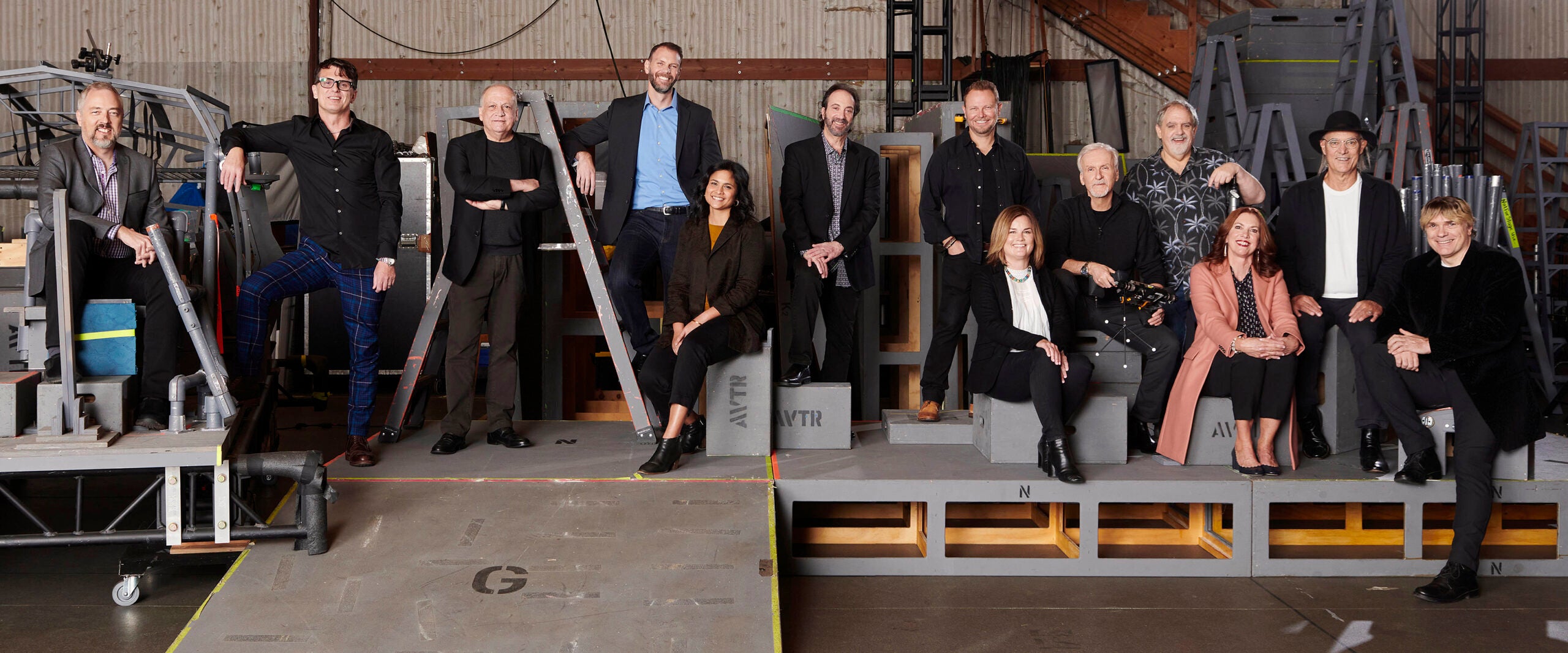13 years after Avatar broke records, James Cameron is back and his franchise is bigger, bolder and wetter than ever. The director and his team break down their massive undertaking.

As soon as James Cameron finished work on the first Avatar movie in 2009, he gathered his department heads, told them they’d remain on the payroll for an additional two months and asked them to prepare a white paper on what they’d need if there was ever a sequel. “And then we went off to a resort for three days and sat at a big round table and worked out the problem of how to make this better,” Cameron said. The result, 13 years later, is Avatar: The Way of Water, which takes the spectacle of that first movie and kicks it to another level.
That new level is both exterior, with vast new regions of the planet Pandora, and interior, exploring the family life of Jake Sully (Sam Worthington), a former Marine who has left his human body to become one of the Na’vi, the occupants of the lush planet lusted after by war-mongering Earthlings who nearly destroyed their own planet. While the three-hour film is astonishing visually, it’s also a grounded story of a father whose kids are in their awkward teenage years, even if those teens happen to be seven or eight feet tall and blue.
“One of the big points coming out of that retreat was getting more nuanced performances, more empathy for these characters,” producer Jon Landau said. Cameron added, “It’s a more emotional film in general. The motion capture didn’t change that much, but what we did with those facial images—introducing AI and machine deep learning into the equation so that what the actors did was what you got at the end with as little human invention as possible—was super important.”
Exploring these characters, he added, was the reason to do another Avatar—and to do the third film, which has already been shot, and the fourth and fifth, which are written and designed and will be made if The Way of Water proves to be a financially successful followup to the top-grossing movie of all time. “The reason to come back wasn’t the extraordinary financial success of the first film,” he said. “In fact, that’s almost a disincentive. The incentive to do it is that we had this great team of artists and this great cast of actors, and everybody trusted everybody.”
In this special section, more than a dozen of Cameron’s collaborators talk about their second journey to Pandora. —SP